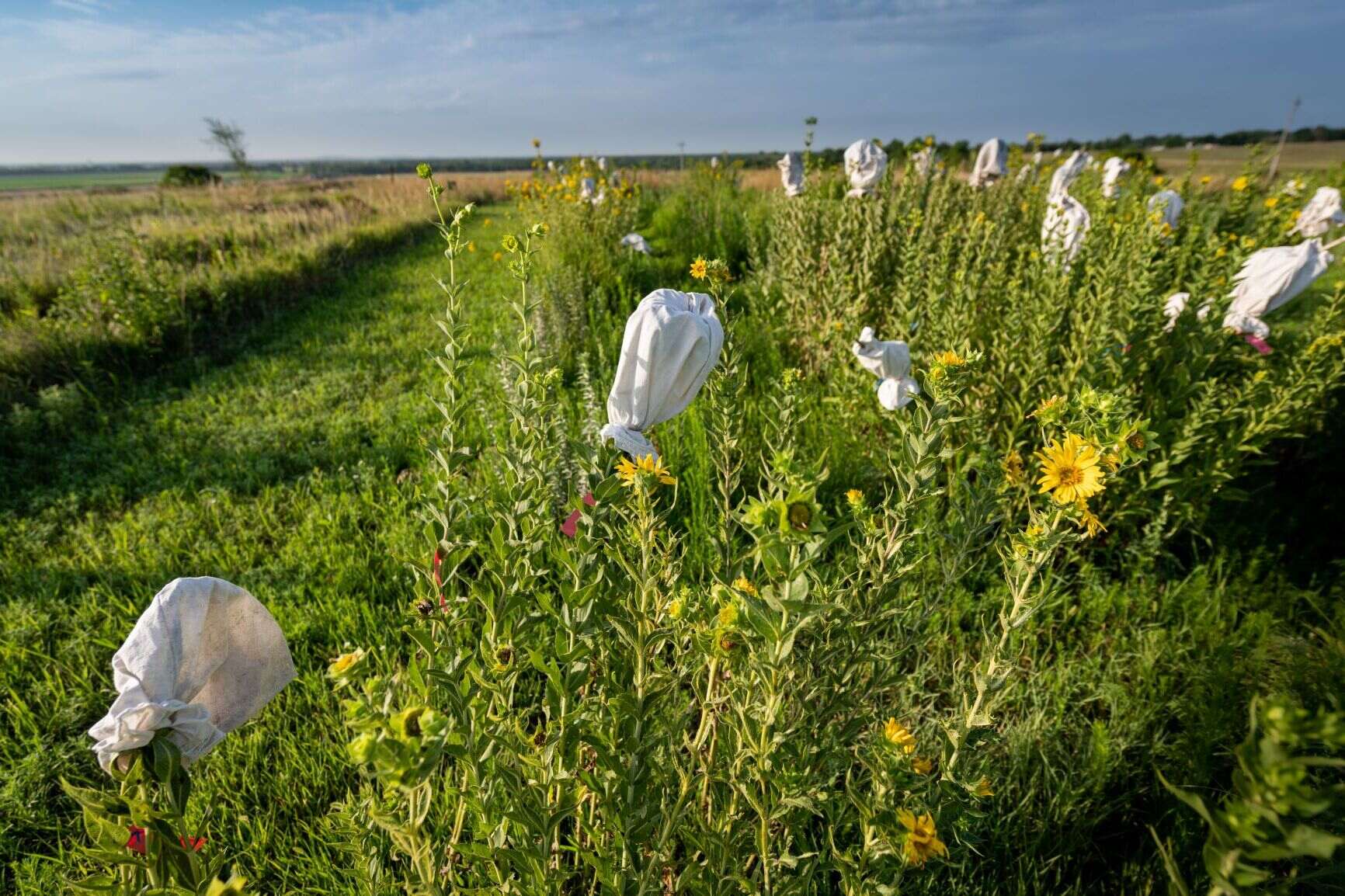
What happened to Silphium, the ancient miracle plant? Silphium, also known as laserwort, was a highly prized plant in ancient Mediterranean cultures, especially in Cyrene (modern-day Libya). This plant was so valuable that its image appeared on coins, and it was used as a form of currency. Silphium had a wide range of uses, from culinary seasoning to medicinal applications, including its famed contraceptive properties. Despite its immense value, silphium mysteriously vanished by the 1st century CE. Overharvesting, overgrazing, and environmental changes likely contributed to its extinction. Today, the exact identity of silphium remains a mystery, sparking ongoing debates among historians and botanists.
Key Takeaways:
- Silphium, a plant of ancient significance, was valued for its culinary, medicinal, and economic importance. Its extinction had far-reaching consequences, impacting both the economy and culture of its native region.
- Despite extensive historical documentation, the exact identity of silphium remains a mystery. Efforts to rediscover plants with similar properties offer hope, but the true identity of this ancient plant continues to elude modern researchers.
Silphium: A Plant of Many Names
Silphium, also known as laserwort or laser, was a plant of great significance in ancient times. Its various names reflect its widespread use and importance in classical antiquity.
- Silphium is known by various names, including laserwort, laser, and silphion. These names have roots in ancient Greek and Latin.
The Native Land of Silphium
This remarkable plant was native to a specific region, which played a crucial role in its cultivation and trade.
- Silphium was native to Cyrenaica, now modern-day eastern Libya. The city of Cyrene was particularly associated with its cultivation.
Economic Significance
Silphium wasn't just a plant; it was a cornerstone of the economy in its native region.
-
Silphium played a pivotal role in the economy of Cyrene. Its value was so high that it was used as a standard unit of currency.
-
The image of silphium appeared on many coins from Cyrene, highlighting its economic importance.
Culinary Uses
In ancient kitchens, silphium was a prized ingredient, adding unique flavors to various dishes.
- Silphium was used as a seasoning and added flavor to various dishes. Its resin, known as laserpicium, was particularly prized for its unique taste and aroma.
Medicinal Properties
Beyond the kitchen, silphium was valued for its medicinal properties, believed to cure a range of ailments.
-
Silphium was highly valued for its medicinal properties. It was believed to have aphrodisiac and contraceptive effects.
-
The resin of silphium was used as a contraceptive and abortifacient. Ancient texts suggest that a single dose could induce menstruation and prevent pregnancy.
-
Silphium was also believed to have aphrodisiac properties, making it a popular ingredient in ancient love potions.
Perfume and Fragrance
The allure of silphium extended to the world of perfumes and fragrances.
- The resin of silphium was used in perfumes and fragrances, adding to its allure and value in ancient times.
The Extinction of Silphium
Despite its importance, silphium eventually disappeared. Its extinction is a significant historical event.
- Silphium is considered the first recorded plant species to go extinct. The exact date of its extinction is unclear, but it is believed to have occurred by the 1st century CE.
Causes of Extinction
Several factors contributed to the decline and eventual extinction of silphium.
-
Overharvesting, overgrazing, and desertification were major factors in the extinction of silphium.
-
The plant's narrow native range and sensitivity to soil chemistry also played a role in its decline.
Historical Accounts
Ancient scholars documented silphium extensively, providing valuable insights into its uses and significance.
-
Pliny the Elder, a Roman naturalist, wrote extensively about silphium in his book "Natural History."
-
Theophrastus, a Greek philosopher and botanist, provided detailed descriptions of silphium in his work "Enquiry into Plants."
Possible Candidates for Silphium
Modern researchers have proposed several plants as possible candidates for the ancient silphium.
-
Ferula tingitana, a plant native to Libya, has been suggested as a possible identity for silphium.
-
Thapsia garganica, another plant from the same region, has also been proposed as a candidate for silphium.
Rediscovery Efforts
Recent efforts have been made to rediscover silphium or plants with similar properties.
- Mahmut Miski, a Turkish scientist, discovered a plant in Turkey that shares similar traits with ancient silphium. The plant, Ferula drudeana, contains secondary metabolites with potential medicinal properties.
Chemical Composition
The resin of silphium contained various compounds that contributed to its medicinal properties.
- The resin of silphium contained secondary metabolites, including compounds with anti-inflammatory, contraceptive, and anti-cancer properties.
Cultivation Challenges
Silphium was notoriously difficult to cultivate, which contributed to its rarity and high value.
- Silphium was difficult to cultivate due to its sensitivity to soil chemistry. The plant required specific conditions to thrive.
Over-Cultivation Theory
One theory suggests that over-cultivation by Roman provincial governors led to the decline of silphium.
- The soil became unable to yield the high-quality resin that was so valuable due to over-cultivation.
Impact of Desertification
Environmental changes also played a role in the extinction of silphium.
- Desertification in ancient Cyrenaica is believed to have contributed to the extinction of silphium.
Nomadic Raids
Human activities, including nomadic raids, further reduced the population of silphium.
- Nomadic raids and overgrazing by livestock also played a role in the decline of silphium.
Hieroglyphic Representation
Silphium was so significant that it was represented in ancient scripts.
- Silphium was represented by the hieroglyph ψ (psi) in Minoan scripts.
Historical Records
Various historical records mention silphium, providing valuable insights into its uses and significance.
- Silphium is mentioned in various historical records, including those of Pliny the Elder and Theophrastus.
Agricultural Hinterland
The region around Cyrene was crucial for the cultivation and trade of silphium.
- Cyrene's agricultural hinterland played a crucial role in the cultivation and trade of silphium.
Excavations in Cyrenaica
Archaeological findings have uncovered evidence of silphium's importance in ancient times.
- Excavations in Cyrenaica have uncovered coins featuring the plant's image and other artifacts related to its trade.
Medical Effects: Real or Imaginary?
The medical effects of silphium are still debated among historians.
- While it was believed to have significant medicinal properties, some argue that these effects were exaggerated or imaginary.
Aphrodisiac Claims
Silphium's aphrodisiac properties are well-documented in ancient texts.
- The extent to which these claims were based on fact or myth remains unclear.
Contraceptive Use
The contraceptive properties of silphium were highly valued in ancient times.
- Ancient physicians like Soranus recommended its use for preventing pregnancy and inducing menstruation.
Abortifacient Properties
Silphium's resin was also used as an abortifacient.
- A single dose could induce menstruation and potentially lead to miscarriage if the woman was already pregnant.
Culinary and Medicinal Uses
Silphium was used in both culinary and medicinal contexts.
- Its resin added flavor to dishes, while its medicinal properties made it a sought-after remedy for various ailments.
Economic Impact
The extinction of silphium had significant economic consequences.
- The loss of this valuable crop led to economic instability in Cyrene and the surrounding regions.
Cultural Significance
Silphium held significant cultural and symbolic value in ancient times.
- Its image appeared on coins, and it was celebrated in poetry and songs.
Rediscovery Efforts in Turkey
Recent discoveries have reignited hopes of finding a plant similar to silphium.
- Mahmut Miski's discovery of Ferula drudeana in Turkey has reignited hopes of rediscovering silphium.
Challenges in Identification
Identifying the exact identity of silphium remains a challenge.
- Various plants, including Ferula tingitana and Thapsia garganica, have been proposed as candidates, but none have been definitively linked to the ancient plant.
Silphium's Enduring Mystery
Silphium, a plant that once held immense value in ancient times, remains a captivating mystery. Native to Cyrenaica, now eastern Libya, it was prized for its culinary, medicinal, and economic significance. Its resin, laserpicium, was used for seasoning, perfumes, and even as a contraceptive. Despite its importance, silphium went extinct by the 1st century CE, likely due to overharvesting, overgrazing, and environmental changes.
Efforts to rediscover silphium have led researchers to plants like Ferula tingitana and Thapsia garganica, but none have been definitively identified as the ancient wonder. Recent discoveries, like Ferula drudeana in Turkey, offer hope but no concrete answers yet.
Silphium's legacy continues to intrigue historians and botanists, reminding us of the delicate balance between nature and human activity. Its story is a testament to the profound impact a single plant can have on culture, economy, and medicine.
Frequently Asked Questions
Was this page helpful?
Our commitment to delivering trustworthy and engaging content is at the heart of what we do. Each fact on our site is contributed by real users like you, bringing a wealth of diverse insights and information. To ensure the highest standards of accuracy and reliability, our dedicated editors meticulously review each submission. This process guarantees that the facts we share are not only fascinating but also credible. Trust in our commitment to quality and authenticity as you explore and learn with us.


